
Please wait...

Please wait...

At CU Eye Care, an eye exam is more than just checking to see if you need glasses. Dr. Meyer and Dr. Heckman are evaluating your eyes to make sure the eye is healthy and without disease while also examining your eyes to make sure you do not have the early signs of diabetes, hypertension or other diseases that affect your overall health.

During your child’s eye exam, Dr. Meyer and Dr. Heckman are also looking into your child’s eye and overall health, but they are also making sure your child’s developing vision is on track to ensure they are able to learn and play as they should.
Just like adults, children can be farsighted, nearsighted or have astigmatism. It is estimated that nearly 80% of learning a child does comes through their eyes. Many times children with vision problems do not know they are experiencing anything abnormal because to them, their vision is normal. Bringing your child in for a yearly vision screening will give them the best start to life.
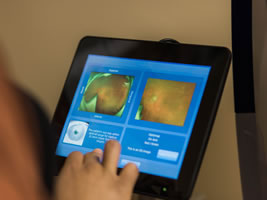
Our state-of-the-art retinal imaging device, the Optos Optomap, provides an unmatched 200° view of the retina in one panoramic image, allowing us to monitor and diagnose a wide variety of retinal conditions and diseases without the need for dilation.
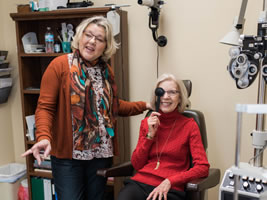
There are many ways to correct less-than-perfect vision, and at CU Eye Care, we are experts in providing you with the right therapies to ensure you can see your best.
The CU Eye Care team can also provide Lasik recommendations and referrals to ophthalmologists whenever necessary.
Dr. Meyer and Dr. Heckman can manage diseases like glaucoma, dry eye, ocular hypertension, macular degeneration, cataracts, diabetic retinopathy or computer vision syndrome. The CU Eye Care team will also help your family find the perfect sunglasses to protect your eyes from harmful UV rays and we have a wide selection of specialty eye wear for athletes and business professionals.

While you may notice changes to your vision with some eye conditions, other problems, such as eye diseases, may be painless and only recognizable through a professional eye exam. It is important to schedule a yearly eye exam with your eye care professional. If you notice any vision changes or have an eye injury between exams, it is also important to see your eye doctor at that time.

Age-related macular degeneration (AMD) is the leading cause of vision loss among those over the age of 50 years old. This condition is caused by the degeneration of the macula, a small spot near the center of the retina and the part of the eye needed for sharp, central vision.

Bulging eyes, or proptosis, occurs when one or both eyes protrude from the eye sockets. While some people are born with eyes that protrude more than normal, others who develop this condition later on in life may suffer from underlying medical conditions.
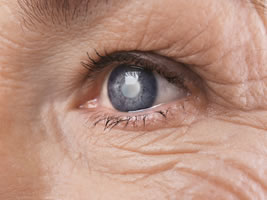
Cataracts are the leading cause of vision loss for people over 40-years old and are the leading cause of blindness in the world. Cataracts have little impact on your vision at first, but over time, your vision will become “cloudy” or “glassy.”

CMV Retinitis is a serious infection of the retina that often affects people with AIDS (Acquired Immune Deficiency Syndrome), immune disorders or those undergoing chemotherapy or bone marrow transplants. As CMV invades the retina, you may begin to see small specks or eye floaters and notice a decreased peripheral vision.

While most people can see color, others have a color deficiency, commonly known as color blindness. While there are not cures for color blindness, people with red-green color blindness may be able to use a special set of lenses to help them perceive colors more accurately. There are also Apple and Android apps that help people with a color deficiency distinguish colors.

Strabismus is a medical term for lazy eye syndrome, which can be caused by a number of conditions, including tropia, eye turns, wall eyed, and wandering eye. Crossed eyes are caused by a miscommunication between the brain and the muscles around the eye, causing a misalignment of the eye.

The most common eye issue for people with diabetes is Diabetic Macular Edema (DME). This condition is caused by fluid accumulation in the macula. Diabetic Macular Edema is a serious eye condition that can cause anything from blurry vision to blindness. Treatment for this condition can help protect your eyesight.

Eye floaters are small specks that drift through your field of vision, particularly when you are looking at something bright like the sky or a piece of paper. You can live with floaters, but sometimes they can be a sign of a more serious problem such as a retinal tear.
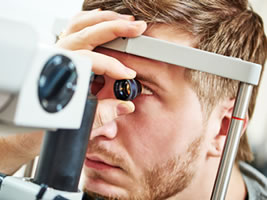
Glaucoma occurs when a buildup of fluid in the eye creates pressure, damaging the optic nerve. Not every person with eye pressure will develop glaucoma. That’s why routine comprehensive eye exams will help your eye care professional determine what level of pressure is normal for you.

While the cause of Keratoconus is unknown, it is a condition that occurs when the cornea in the front of the eye, which normally is round, becomes thin and cone shaped. During the early stages of keratoconus, vision is slightly blurry or distorted.

When vision cannot be corrected by prescribed eye wear and is lower than 20/70, you are considered to have low vision. This is uncorrectable vision loss that interferes with daily activities.
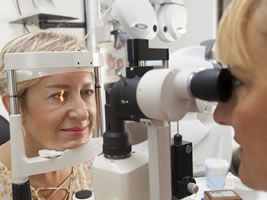
Ocular hypertension is above normal pressure in the eye. Some people can have ocular hypertension without developing damage to the eye or their vision. It is important to have a yearly eye exam to determine what normal eye pressure is for each individual.
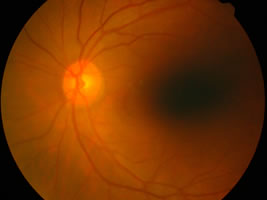
When the retina, which is a light-sensitive layer of tissue that sends visual messages to the brain, detaches from its normal position, it can cause permanent vision loss if it is not treated. Symptoms include a gradual increase in floaters, light flashes in the eye or a curtain over the field of vision. Anyone experiencing these symptoms should seek medical care immediately.
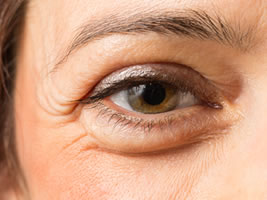
The most common causes for eyelid twitching, a repetitive, involuntary spasm, are stress, fatigue and caffeine. Very rarely, this condition can be the sign of a serious brain or nerve disorder.

When you or your child comes down with pink eye, bring him into the C-U Eyecare office. We can exam your child and prescribe the appropriate medication to clear it up.